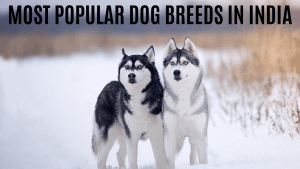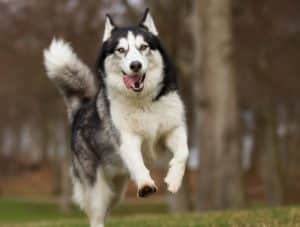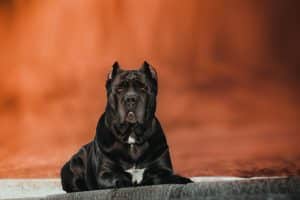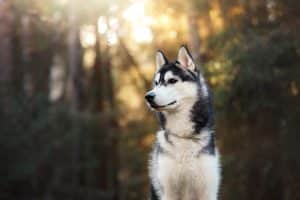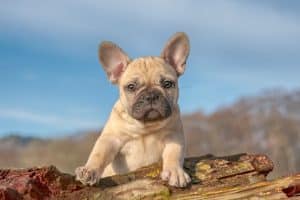Cane Corso is a born guard dog, reliably guarding his owners and their property. This breed is known as a working farm dog as this breed once used to work for farms guarding livestock and chasing wild boar, as well as dock diving.
Absolutely! Here’s a breakdown of the Cane Corso’s working dog heritage, qualities that suit them to farm and ranch life, and important considerations before bringing one into this environment:
The Cane Corso: From Guardian to Farmhand
- Historical Roots: Descended from Roman war dogs, Cane Corsos were versatile working dogs in Italy, guarding livestock, hunting, and protecting property. Their strength, loyalty, and intelligence made them invaluable on farms and ranches.
- Modern-Day Roles: While less common as dedicated farm dogs today, Cane Corsos retain the instincts and abilities that make them potentially well-suited to the role.
- Protective and Alert: Their natural guarding drive makes them excellent watchdogs, deterring intruders and potential threats to livestock.
- Physically Capable: Cane Corsos are powerful, agile, and have the stamina for farm life. They can excel in activities like herding and property patrol.
- Intelligent and Trainable: With the right guidance, Corsos can learn specialized tasks and adapt to farm routines.
Key Characteristics for Farm and Ranch Work
- Strength and Size: Their build allows them to handle physically demanding tasks and act as a deterrent to predators.
- Guardian Instincts: Cane Corsos are naturally protective of their territory and ‘family’ (which would include livestock).
- Athleticism: They possess the agility and stamina for covering large areas and engaging in active work.
- Intelligence and Trainability: Corsos are smart and eager to please, making them responsive to instruction for specialized farm duties.
Important Considerations Before Getting a Cane Corso for Farm Work
- Thorough Training is Essential: While Corsos have innate guarding tendencies, controlled guarding, obedience, and specific livestock-related training are necessary to prevent accidents or over-aggression.
- Socialization is Crucial: Early and ongoing socialization prevents indiscriminate aggression. Corsos need to learn to differentiate between threats and friendly people/animals on the farm.
- High Exercise Needs: These are not dogs to simply ‘leave’ on the property. They need ample physical activity and mental stimulation. Bored Corsos can become destructive.
- Potential Predatory Drive: Their hunting background means strong supervision around livestock, especially during early training stages.
- Financial Commitment: Large dogs like Cane Corsos have significant food, veterinary care, and potential training costs.
Health Considerations for Working Cane Corsos
- Responsible Breeding: Choose a breeder who prioritizes health and temperament. Corsos can be prone to hip dysplasia and other issues that could limit their working capabilities.
- Regular Vet Care: Preventative care, parasite control, and prompt attention to any health concerns are crucial for a working dog.
- Nutrition and Conditioning: A high-quality diet and exercise regimen tailored to their workload will keep them fit and able to perform their duties.
Key Takeaways
- Potential, Not Guarantee: Even with careful assessment, not every Cane Corso will be an ideal farm dog. Genetics, training, and individual personality all play a role.
- Responsible Ownership Is Key: Meeting their physical and mental needs, ensuring proper training, and committing to their health are essential for success.
- Working Partnership: A Cane Corso can be a valuable asset on a farm, but it’s a two-way relationship. They thrive when given appropriate tasks, affection, and guidance.
If you’re committed to training, have the resources to support a large working dog, and understand their unique needs, a Cane Corso could potentially be a loyal and hardworking addition to your farm or ranch.
Remember: Consult with experienced Cane Corso breeders and trainers who have experience with working dogs in farm environments to assess their suitability for your specific circumstances.
Description Of The Cane Corso Dog
Cane Corso is similar to other members of the Molossian group but more graceful and athletic. These are large dogs, females at the withers reach 58-66 cm and weigh 40-45 kg, males 62-70 cm and weigh 45-50 kg. Large males can reach 75 cm at the withers and weigh 60 kg.
This breed is muscular and powerful, but not as stocky and massive as other mastiffs. The dog should look capable of dealing with an attacker, but also energetic dog capable of hunting. The tail of dogs is traditionally docked, in the region of 4 vertebrae, and a short stump is left.
The head and muzzle are powerful, located on a thick neck, and the head itself is large relative to the body but does not cause imbalance. The transition to the muzzle is pronounced, but those are as pronounced as in other mastiffs.
The muzzle itself is long as for Molossians, but short compared to other breeds of dogs. It is very wide and almost square. The lips are thick, drooping, and form flails. At first, most Cane Corsos were born with a scissor bite, but now many have a slight underbite. The eyes are medium in size, slightly protruding with a dark iris.
Ears are most often cropped in the shape of an equilateral triangle, after which it looks like the dog has no ears at all. As with the ponytail, this practice is falling out of fashion and is sometimes banned. Triangular-shaped natural ears, drooping. The general impression of the dog: are attentiveness, swiftness, and strength.
Wool with a short, soft undercoat and coarse top coat. The coat is short, thick, and shiny. Its color is varied: black, lead gray, slate gray, light gray, light red, dark red, and brindle. Brindle and red dogs have a black or gray mask on the muzzle, but it should not go beyond the line of the eyes.
Some also have black on the ears, but not in all standards is acceptable. Many dogs have small white spots on the chest, paws, and bridge of the nose, which are allowed by the standard.
History of the Cane Corso
The Cane Corso dog’s history shows that this breed was bred in Italy and appears to be descended from Roman war dogs. The Cane Corso is a lighter breed than its closest relative the Neapolitan Mastiff and was bred for dog sports such as game hunting, guarding, and farm work.
The breed was on the verge of extinction, but since the 1970s, the breed has been restored by the efforts of enthusiasts. In 1983, the association of Cane Corso Lovers SACC (Societa Amatori Cane Corso) was created, and the Fédération Cynologique Internationale recognized the breed in 1996.
By 1996, this dog breed had received recognition from FCI (Fédération Cynologique Internationale). In 2010, Cane Corso was also acknowledged by the National Breed ClubAmerican Kennel Club (AKC).
General Characteristics Of Cane Corsos
The Cane Corso (also known as the Italian Cane Corso, Italian Mastiff, and Cane Corso Italiano) is one of the oldest Italian breeds. These dogs were extremely popular among the aristocrats, who used them for hunting, dog fighting, and guarding castles, and among the commoners, whom the Cane Corso helped to herd cattle on farms.
By the seventies of the last century, the breed was in danger of extinction, but thanks to the efforts of the Italian scientist Giovanni Bonatti, it was saved and revived. The Cane Corsos are working dogs and guard dogs.
Cane Corsos will faithfully serve their owners, selflessly protecting their property from extraneous encroachments. Despite its aggressive behavior and wariness towards strangers, the Cane Corso is an affectionate and good-natured dog in the family circle, which is often used as a nanny for small children.
Particular attention should be paid to the education of the Cane Corso and its early socialization from a young age to cope up with family members well. This dog needs constant exercise along with mental and physical stimulation, so ask a specialist to create a special training program for your pet.
In the past, this dog breed used to work for farms and ranches. But now they are more popular as family pets. However, since they are working dogs, to maintain a healthy dog weight they need at least a mile of walking or running daily.
These working breeds are great for farms with or without obedience training and mental stimulation.
Cane Corso Dog Health To Perform In Farms And Ranches
Like other dog breeds like Pit bulls, German Shepherds, Siberian Huskies, Newfoundlands, Border Collies, and other animals on farms & ranches, Cane Corsos are highly prone to specific health conditions.
Not all representatives of the breed get sick, but it is important to know about possible diseases. Cane Corso’s can be prone to hip dysplasia; eyelid anomalies such as eyelid inversion (entropion), eyelid eversion (ectropion), and “cherry eye” (third eyelid adenoma); demodectic scabies (which may be hereditary); torsion of the stomach.
So, always make sure you get your pup from a reputable breeder only who guarantees purebred Cane Corso working dogs for your Farm and Ranch. If you get a healthy dog, it can work as well as your other neighbor’s dog.
Working Qualities Of Cane Corso In A Farm And Ranch
The Cane Corso was developed mainly as a working breed of dog and its morphological features reflect its suitability for work on a farm and/or ranch. This breed of dog is concentrated on protection and guard. These dogs from Roman Empire are hardy, strong, very smart, and powerful dog breeds.
They have excellent intuition and an innate defensive reflex, and they separate the game from the real potential threat. But without a serious reason or a command, the Cane Corso doesn’t show aggression.
Thus, this is an ideal bodyguard-dog with an inherent sense of fearlessness, and territory, and can make independent decisions for farm and ranch guarding. This dog is quite large, strong, powerful, and elegant, with pronounced relief muscle tone, strong bones, the strong slender limbs.
FINAL WORDS
These work dogs need plenty of exercises to stay in shape and maintain a healthy weight. Long walks or runs in the morning and evening are a must every day.
For mental work, it is necessary to involve the Cane Corso dog in work, dog sport, teaching command, and obedience.
Be prepared for the fact that the maintenance of a large thoroughbred dog can be very expensive in terms of money. The expenses include the purchase of premium-segment feed, ammunition, and dog care products.
Also, including veterinary care. Take into account all these costs before purchasing a Cane Corso dog for farm and ranch work.


